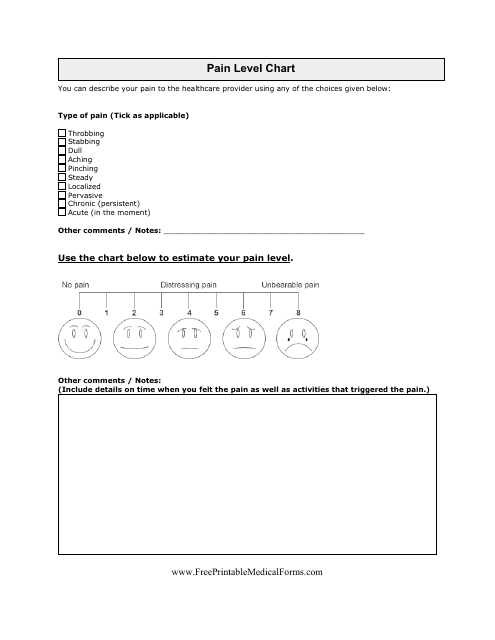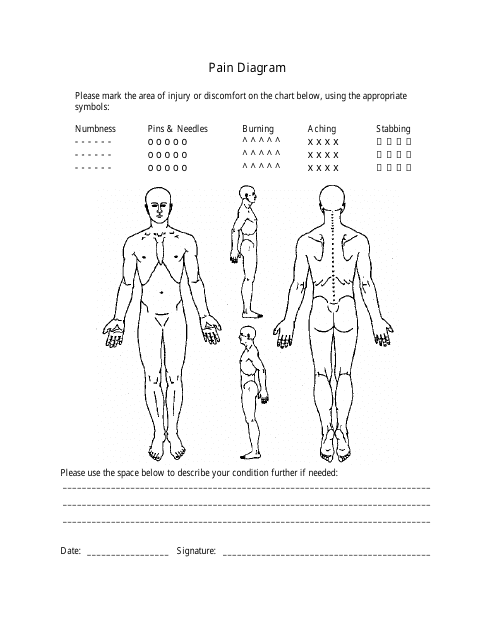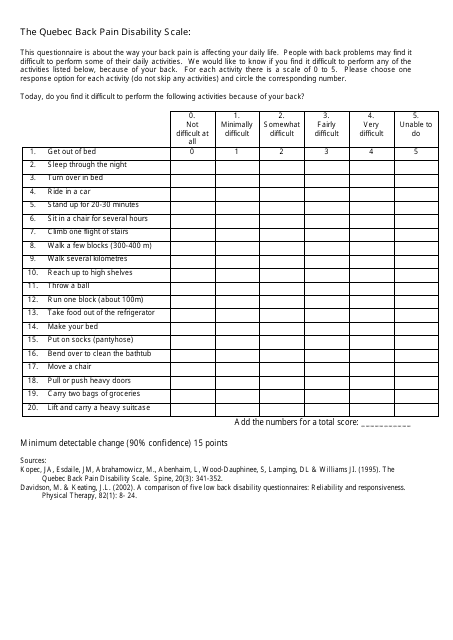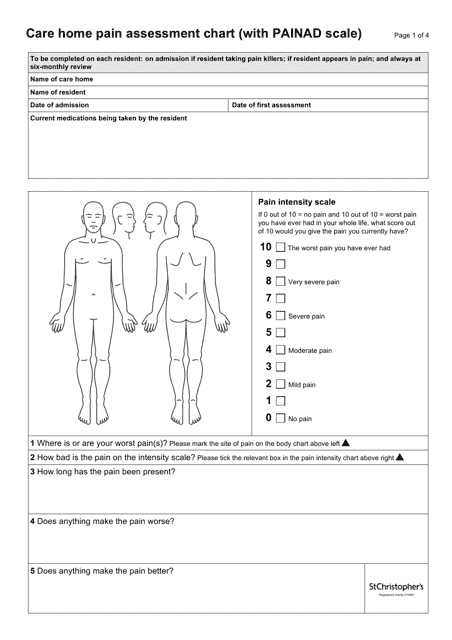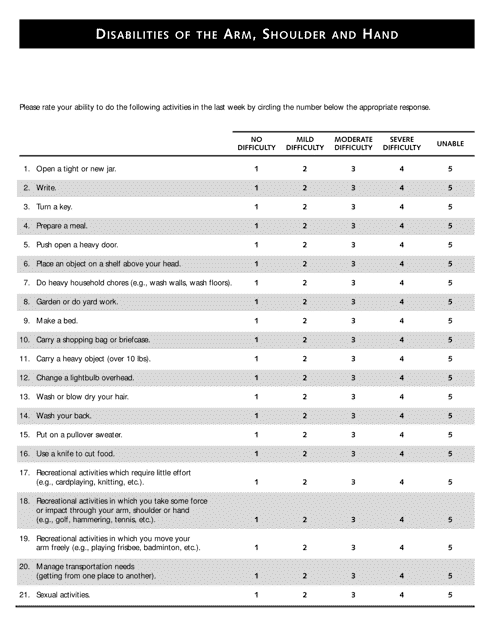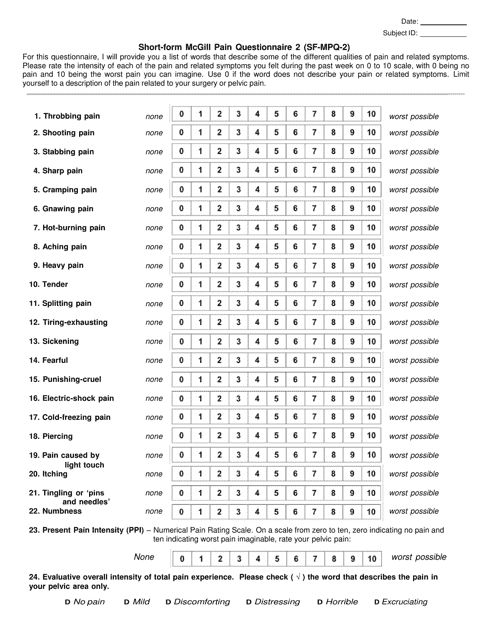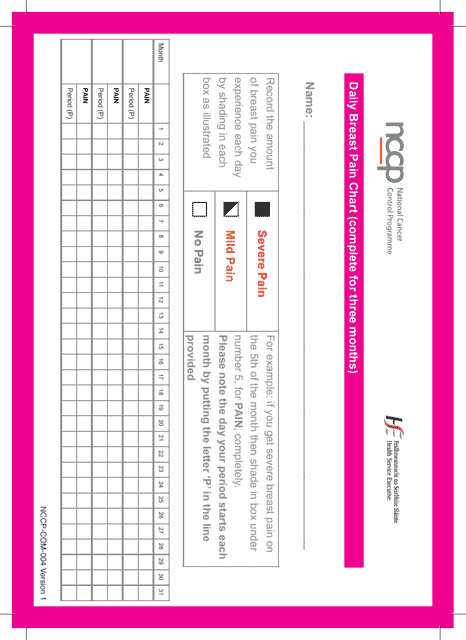Free Pain Chart Templates
Pain Chart: What Is It?
A Pain Chart is a detailed tool that depicts a human body or a scale medical professionals and patients may use to discover the location of pain and the intensity of this discomfort.
Alternate Name:
- Pain Diagram.
Doctors can bring up the Pain Chart during the appointment and discuss whether the pain is dull or sharp and where the painful sensations are coming from. Students are encouraged to take advantage of visual instruments that let them learn more about human anatomy, possible causes of pain in various body parts, and drug options the patients should be prescribed. Patients that follow the instructions of their doctors can look at the chart to record the manifestations of their illness or injury - once they visit the office of their healthcare providers, they share their observations to get the right treatment.
For a full list of Pain Chart templates please check out our library below.
Pain Chart Types
- Pain Location Chart. When a doctor is examining a patient that complains about painful sensations, one of the first things to do is to identify the exact area of the body - or even better, the body part or internal organ - that transmits pain signals. Show the chart to the person you are treating and arrive at the correct diagnosis as quickly as possible;
- A Pain Face Chart is a helpful tool most often used by pediatricians determined to find out the level of pain the children are experiencing - since young kids may not be able to describe their symptoms accurately, a range of faces that smile, frown, and cry would be the easiest way to establish if the pain is mild or severe;
- Pain Medication Chart. There is a large variety of pain relievers available to patients that struggle with chronic pain or manage an illness that forces them to deal with occasional pain episodes - the doctor is supposed to refer to an informational sheet to figure out what drugs are the safest and the most effective for every particular case;
- A Pain Level Chart can include visual representations of pain or a simple scale from 1 to 5 or 1 to 10 - the patient will have an opportunity to scrutinize the chart and point out what description suits them the most at the moment or summarizes the painful symptoms they experienced in the past.
Still looking for a particular template? Take a look at the related templates below:
Documents:
141
This form is used for tracking and recording pain levels and symptoms experienced over a period of time. It helps individuals and healthcare providers understand patterns and severity of pain for better management and treatment.
This Pain Level Chart Template with Faces is a visual tool that helps in assessing and communicating the severity of pain experienced by individuals. It uses facial expressions to represent different levels of pain, making it easier to understand and document pain levels.
This document provides a template for recording verbal descriptions of pain. It can be used to track and communicate levels of pain experienced.
This document provides a diagram and rating sheet for evaluating and tracking body pain. It can help you identify and assess the intensity or severity of different types of pain throughout your body.
This template is used to create a pain chart for tracking and recording levels of pain.
This document provides a visual template of the human body, specifically highlighting areas where individuals may experience pain. It can be used for medical purposes, such as documenting and tracking pain symptoms.
This document provides a Foot Function Index with a Pain Chart for clients of Sapphire Physical Therapy. The index helps assess foot function and pain levels.
This document is a body pain diagram template that helps individuals identify and visualize areas of pain or discomfort in their body. It can be used to track and communicate symptoms to healthcare professionals.
This document is used for evaluating the severity and disability caused by back pain in individuals residing in Quebec. It is a questionnaire sheet that helps healthcare professionals assess the impact of back pain on a person's daily activities and quality of life.
This document is a pain level log template created by Dr. Colleen Blanchfield. It helps individuals track and record their pain levels over time.
This Form is used for collecting information about a patient's daily habits as part of the intake process.
This template provides a visual representation of the body that can be used to track and document different types of body pain. It is useful for individuals who want to keep a record of their pain symptoms and location for reference or consultation with healthcare professionals.
This document is a breast pain chart used to assess and track different levels of breast pain in women. It provides a visual representation of the pain and can help individuals communicate their symptoms to healthcare professionals.
This type of document is used for assessing pain in individuals with advanced dementia. The Pain Assessment in Advanced Dementia Scale (Painad) is a tool that helps healthcare professionals evaluate pain levels in patients who may not be able to communicate their pain verbally. It is designed to ensure appropriate pain management for individuals with advanced dementia.
This document is a pain rating scale provided by the British Pain Society. It is available in English and Chinese languages. This scale helps individuals in describing and rating their level of pain.
This document is a pain assessment chart specifically designed for care homes, incorporating the Painad Scale. The chart helps caregivers to monitor and assess the level of pain experienced by residents in care homes. It provides a systematic approach to pain assessment and helps ensure appropriate interventions are implemented for residents' comfort and well-being.
This document is a headache chart or migraine diary used to track and record information about migraines, such as frequency, duration, triggers, and symptoms.
This document provides a headache chart that includes a severity scale, common headache triggers, and relief measures. It helps individuals track their headaches and find effective ways to manage them.
This document provides an assessment tool for evaluating the disabilities of the arm, shoulder, and hand. The assessment tool is commonly referred to as the Dash Assessment Tool and is used by healthcare professionals to evaluate and measure the level of impairment in these areas.
This document is a tool used to assess shoulder pain and disability in individuals. It helps evaluate the impact of shoulder pain on daily activities and functioning.
This document is a questionnaire used to assess pain levels and the impact of pain on daily activities.
This document is a short-form questionnaire used at McGill University to assess the intensity and quality of pain experienced by an individual. It helps to understand and evaluate the personal experience of pain from a patient's perspective.
This document is a daily breast pain chart that allows individuals to track and record their breast pain on a daily basis. It can help identify patterns and provide useful information for healthcare professionals.
This document is a pain diary provided by NPS MedicineWise. It is used for recording and tracking pain levels over a specific period of time.
This document is a tool used to assess and measure pain levels in infants. It helps healthcare professionals determine the best course of treatment and care for the infant.
This document provides a chart to help track and classify different types of headaches for better understanding and management.
This document describes the Pain Assessment in Advanced Dementia (Painad) Scale, which is used by the American Medical Directors Association to assess pain in individuals with advanced dementia.
This type of document is a pain assessment scale specifically designed for evaluating the pain levels in cats. It was developed by the Universities of Glasgow and Edinburgh Napier.
This document provides a chart with different types of heartburn medications, helping you compare their effectiveness, side effects, and recommended dosage.
This document is a chart that provides a pain assessment scale called the Abbey Pain Assessment Scale. It is used to measure and evaluate the level of pain experienced by individuals in healthcare settings.
This document is a symptom chart used to help diagnose acute knee pain. It provides a visual representation of different symptoms and the possible causes of knee pain.
This document is for conducting an audit on pain management for elderly patients.
This document is a pain chart used by Advanced Physical Medicine to help assess and monitor pain levels in patients.
This document is a pain trigger points chart created by Enovative Technologies, LLC. It provides information on specific points on the body that can trigger pain and discomfort.
This document is a visual representation of the human body. It is commonly used in medical and health fields to document physical examinations, pinpoint pain or injury locations, and facilitate understanding of human anatomy.
This document describes the DoD/VA Pain Rating Scale, used to assess and measure pain levels in military veterans and active-duty service members.
This document provides a consumer's guide for managing back pain, created by the Musculoskeletal Health Network under the Department of Health in Western Australia, Australia. It offers valuable information and tips for individuals seeking to effectively manage and find relief from back pain.
This document provides a symptom chart for chronic knee pain using Prizm technology.
This document is a chart used to assess the pain levels in pets. It helps veterinarians and pet owners identify and monitor pain in their furry companions.
This document is a checklist for watchful waiting for back or neck symptoms. It helps track and monitor symptoms for better understanding and treatment.

